Saws Come Back to Life
The lost and abused now lies against the cared for and stands out. It’s as if it longs to belong – to become becoming – and the ones I seek are those where the work changes the present for the best in the future. A man came in and said his sons didn’t want his woodworking tools and that he had the best ones anyone could want. They asked him what they would do with them. He wished he could give them to them, but they saw no value in them. I am sure they will likely end up as the unloved even though they actually enabled the elder man to put food in his children’s bellies, shoes on their feet and clothed them with a warm home. It’s a sad day when these things happen and we own governments and educators by their pay that are governing from the same platforms around the world. We don’t need craftsmen and women any more, we need technicians and engineers on computers to send schematics around the world for them to be made more cheaply at someone else’s expense. We are powerfully global now. It’s a global economy. Don’t keep your head in the clouds with the dinosaurs. Come down from loftiness and get real, they say to me and others who would like to live their lives differently. Is there an alternative?
Can care change something and how does care manifest itself most? I took the saw and abraded away the enemy in rust that covered the plate on both sides. It’s tough to take the abrasive paper on the first stokes, mentally I mean, but then the steel starts to show through the red rust. It takes steady care not to abrade wrongly, go against the grain, create ugly patterns. I worked more and all the more as the steel began to shine again.
More neglect shows in the plate and the steel was damaged. I took a hammer and placed the plate on the second hammer face as an anvil. The steel resisted and seemed to reject my work for a minute or two. It worsened but then yielded as I adjusted my taps to manipulate the steel and move the steel toward the direction I felt change the shape. The plate rewarded my eye cast along the edge. Straightness came back and the work seemed good to me.
The brass too seemed overly dull. It doesn’t really need to shine but it does need to feel and look at least cared for. I used a finer abrasive to skim off the surface and penetrate to pure brass without stain and oxidation. A name emerged with each stroke and I felt an affection developing. In some ways the saws I have were each one orphaned. In a world where tools have lost their meaning I gather them and ask how it’s possible that I live in a culture that in many ways seems to have a love hate relationship with hand tools. Some people despise hand tools and workshops and working men and women who use or used them and in other ways some see them as somehow worth saving in the using of them.
I received a plane from eBay last week that was sharp and the seller sent me a note saying he appreciated what I’d done for the woodworking world via YouTube and the blog and the filming we do through the film makers. Before I read the note I noticed that the plane blade had a convex camber and the corners removed in like manner to my own. Then I saw why. The plane was a Woden I wanted to upgrade parts on one I have. I have a longer iron but a broken sole.Uniting the two will give me a good plane. Waiting for another Woden sole will give me another plane.
I love the thought that things unloved and lost become found and restored, renewed and then used and cared for. Who can explain such a thing. The dirt and grime in a plastic box of near discardment in used up oil and grease, dust and dead things past. You lift it from the wasted and place it in rough hands and then the hope starts working. The rust abrades your fingers and the handle has an unkempt feel of rough, wet-raised grain to it and you say to yourself, “Can this thing be loved again?” “Made-up”, we say in the UK, when we feel happy and successful? Can this saw feel ‘made up’? Something says “put it back, it’s not worth the effort”, but I can’t really. I picked it up in so helpless and useless a state. I new there was more life to be had and respect could be restored.
I look into the future now instead of the past and the wood this saw will cut to shape; dovetails and housing dadoes and much more. I think of the energy of exactness hand work has using hand tools and then I think of the excesses of machines that so exhaust into our world. How a bandsaw spins a million tooth-cuts per minute to my thousand before we switch off its motor. I never use less or more than a fraction of a stroke in waste and so I feel that feeling of settledness and wellbeing others rarely understand. Imagine this saw when tomorrow I reshape each tooth and size them to task. Set them and refine them after 60 years of isolation and neglect. The man who placed it away in his tool box; the craftsman that wore the handle to shape and once kept it free from rust and decay for decades. The one who loved it and never abused it will never know I retrieved it from the world of throwaway now, but when I am gone my work will live on in the lives of thousands upon thousands of woodworkers who understand what I am saying today.
Steps to recovery and restoration necessitated a little work on the handle but no reshaping. One of the loveliest handles.
Here is the newly cared for amongst others.
I feel rust melt away and trust and truth restored as others search out truths about working with their own hands. How about that!
Rarer Finds Come Home Too
This chisel was described as a floor board chisel. It’s really not that. It’s a sash pocket chisel actually. I own one of these in the USA tools I have but this one came up via eBay. I bought it for little enough and will use it from time to time. Sash pockets are removable sections in each side of sliding sash windows. These pockets house the cast iron weights that work as counterweights to the sliding sashes and makes them liftable. Sometimes the sash snaps and the weights lie in the bottom of the casing. The sash rope (called a sash knot) needs to be retied. I suppose the seller used it for another common use, which was splitting tongues of floorboards so that the board can be lifted to access pipes and wires beneath. Little misnomer really.
Sequential cuts
John found this tiny boxwood spokeshave that’s quite a scarcity these days, which was again via eBay. Both the sash-pocket chisel and the spokeshave are made by our once famed British Marples of old. Searching ebay can be tedious but when you know what to look for you can make inexpensive forays into realms of tool collecting that at one time we had to travel many miles to and stand for many hours at to bid on when people around you were outbidding according to the look of determination on another’s face. John did buy a glut of chisels over the past few weeks, so if there’s a chisel shortage we can blame him. He tends to collect the mixed unsets. On average he spends under two pounds a piece including shipping.
Anyone UK side know where I can buy one of these older brass wire brushes. This one has the tightest clumps of bristles that never bend and I rely on it so much.
Please let me know if you have one spare for sale.




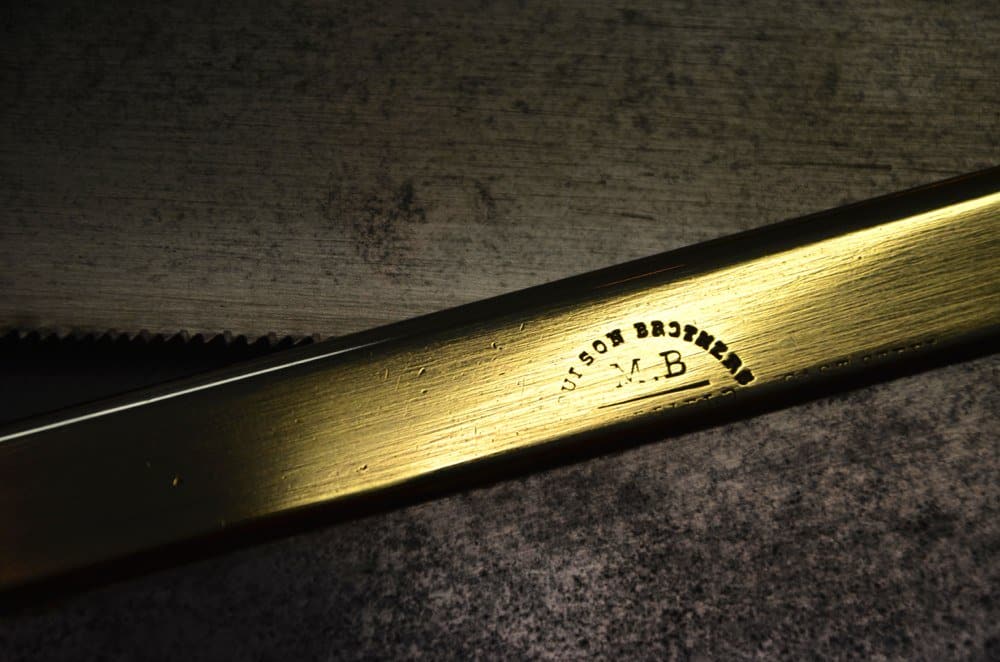
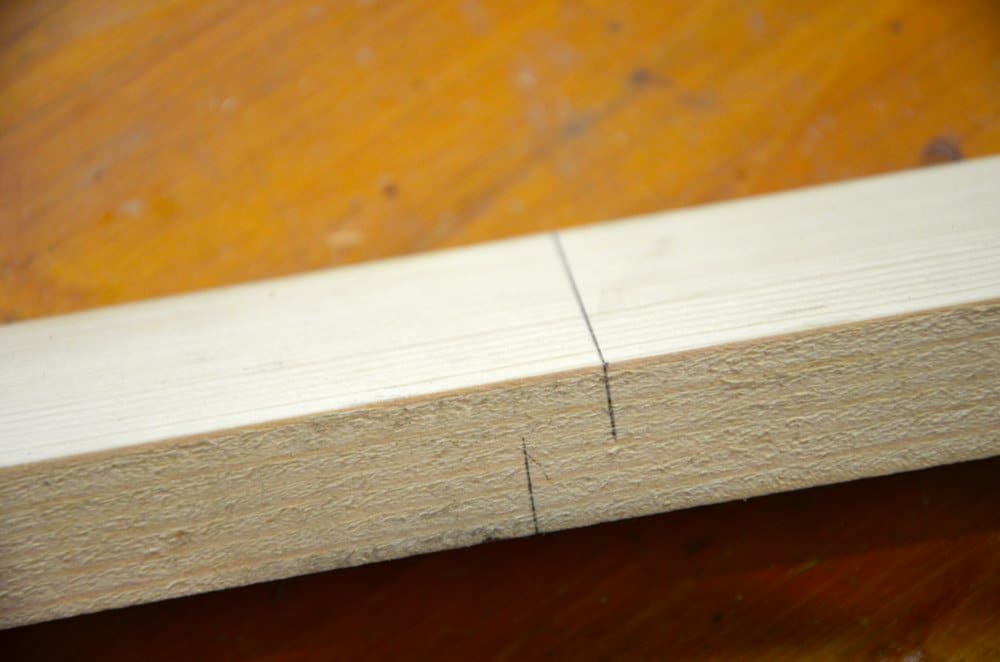
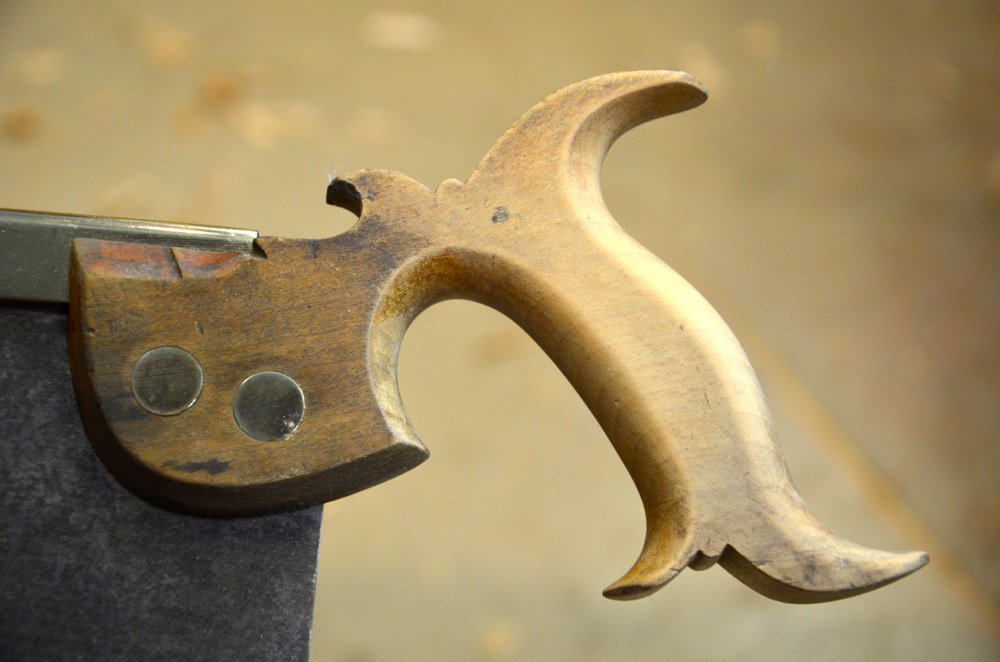

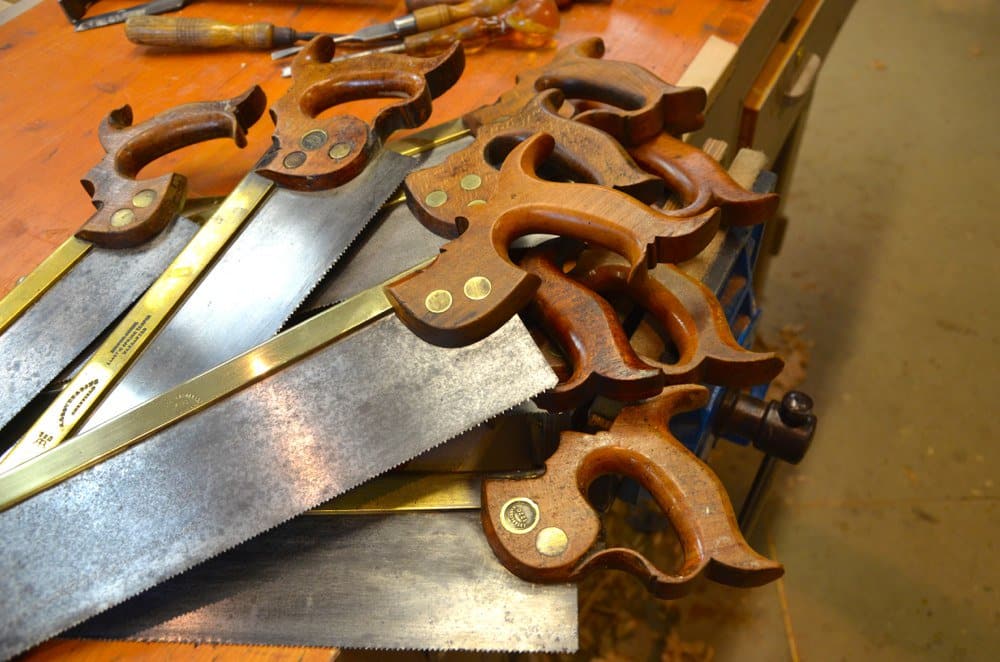
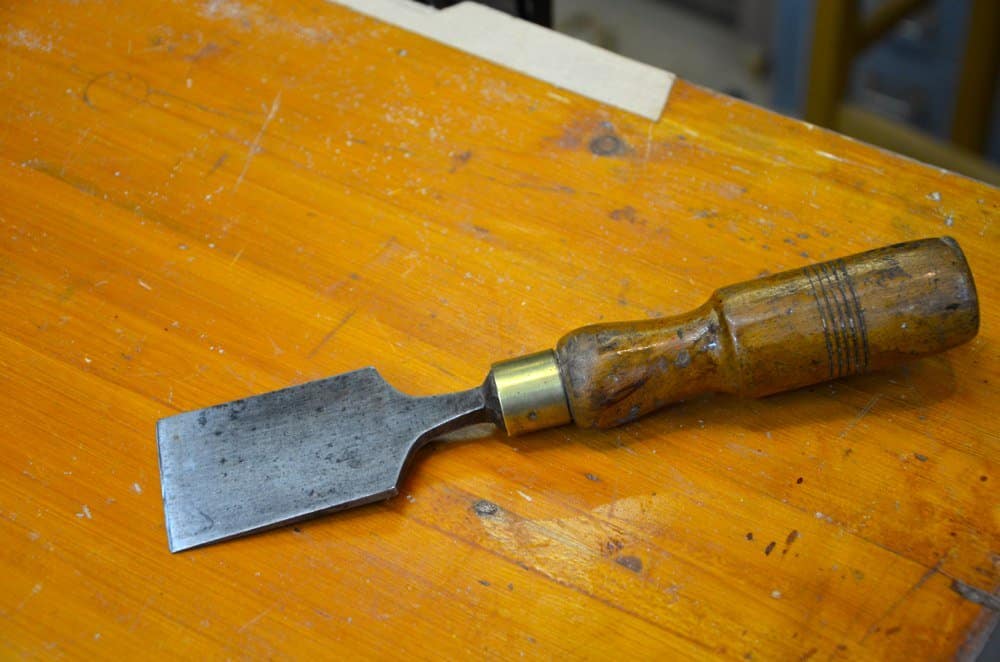

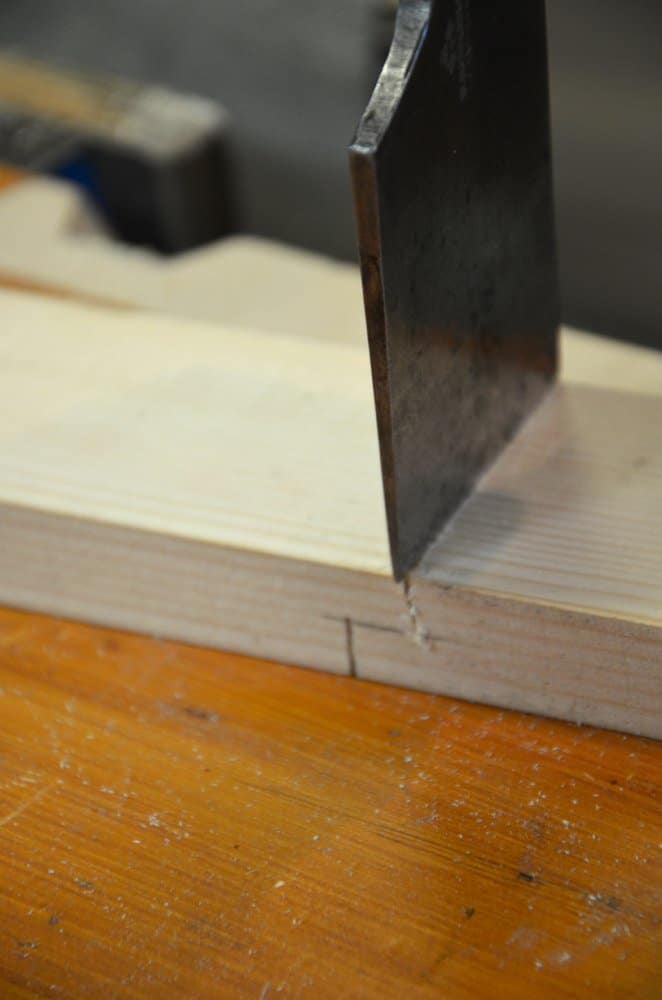

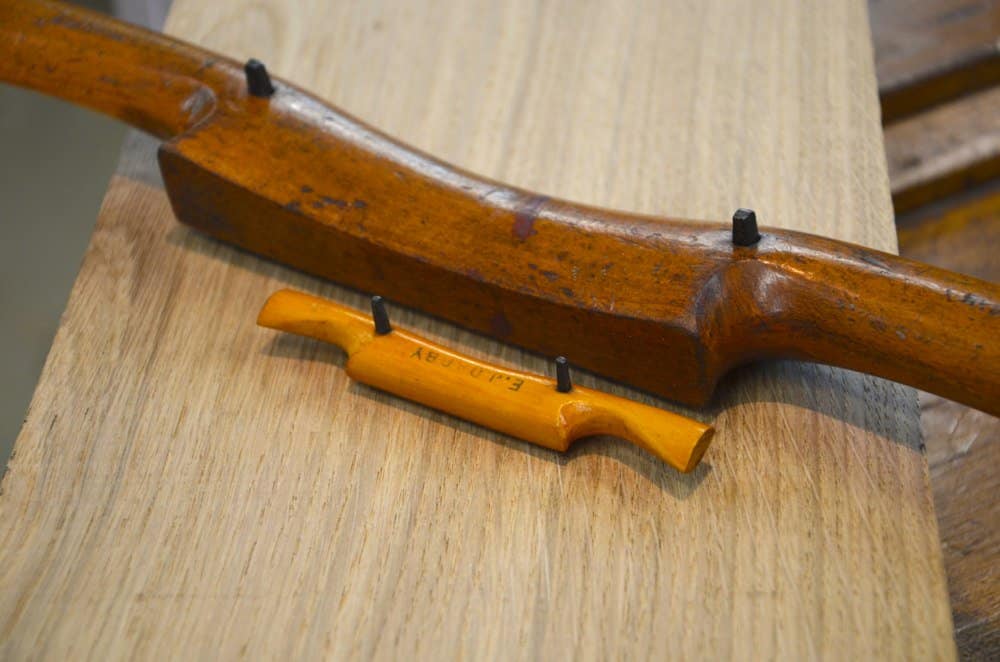
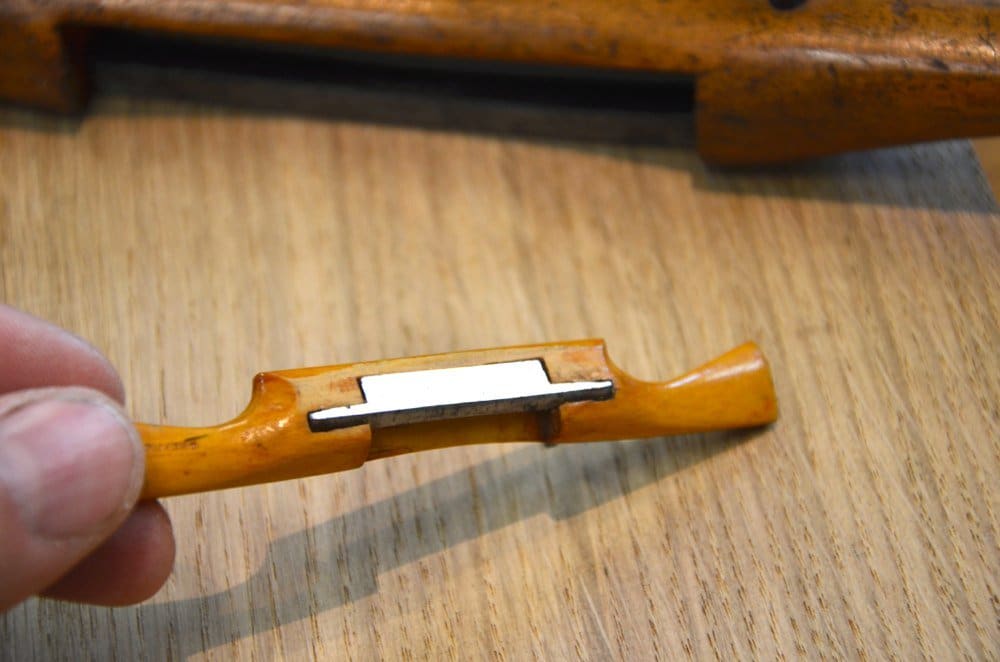

The closest I could quickly find on ebay were “brass suede brush” or “brass lint brush”. maybe those terms will help you find a replacement. Aparently many years ago, the fabric used on furniture and clothing was robust enough to withstand the use of brass brushes for removing lint. I laughed out loud when I realized what you were doing with the rabbet cut. Brilliant! Thanks for sharing your ingenuity.
I hope the man finds peace knowing his tools are now cared for by you.
“What would I do with them?” Can you ever imagine asking a question like that when it came to what is lying on that desk? Nope, that is why for people who still “have their head in the clouds” there is no alternative. 🙂
I picked up an old file and rasp at a car boot a few weeks ago.. covered in Rust. I used the electrolysis method to clean them up. It takes a little longer and it is not the thought of the physical work but seems to me a gentler way of removing the rust. Is this something you could consider Paul as to lesson the abrasion marks on the cheeks of the saws etc. ?
I think it’s appropriate for some awkward tools, perhaps, but not necessary for all. It’s not really just the removal of rust but smoothing of roughness in the steel too so abrasion has its part and if so I think I’d rather go straight for it and have a plate like this done in 20 minutes..
Ah, sash pockets. 40 years ago I was in the trades, specializing in restoring double-hung windows. We replaced sash cords with brass sash chains and restored the sashes, keeping as much of the beautiful old glass as possible. Then came the recession, and no one was spending money on restoration. Back to school I went. But every time I pass the old Blackstone hotel in downtown Chicago, I look up to see my handiwork.
I’ve recently revived 5 old saws thanks to your inspiration Paul
A gent saw, two tenons a rip saw and a panel saw cost around £10 the lot
And pleased that one is a Disson another a Tyzack and the panel saw is Nameless but I think is near 100 years old-its my favourite.
All go to task as well as the day they were made.
I’m most happy that they haven’t ended up in landfill
Thanks Paul
Wire brushes – Paul, have you seen these on eBay UK? Item number 181207139044
Yes, pretty standard but I am afraid no where near what I have. Thanks for going to the trouble though. The one I have is a real engineers one.
I all ways enjoy seeing old tools being resurrected and you did a great job on that saw. I have had several saws that were loaded with rust. I usually take a razor blade and lightly scrape as much rust as I can before I hit it with sand paper or scotch brite pad.
Thanks for sharing !
Steve
Hi Paul,
What you have is an old suede brush. I have a couple in similar condition that I use for cleaning up files.
This looks like pretty good value…
http://www.outdooraction.co.uk/outdoor-accessories-care-repair-products-footwear-care-products/nikwax/nikwax-suede-brush-pd-3826.php?gclid=CLe0y9i9zcACFfMZtAodVlkAew
If you’re quick you might get the last one here (shame about the plastic handle)…
http://www.ebay.co.uk/itm/like/390819948905?limghlpsr=true&hlpv=2&ops=true&viphx=1&hlpht=true&lpid=108&device=c&adtype=pla&crdt=0&ff3=1&ff11=ICEP3.0.0&ff12=67&ff13=80&ff14=108
Or this on Amazon…
http://www.amazon.co.uk/Wooden-Handle-Suede-Shoe-Brush/dp/B0079X2KYK
Or try this company…
http://www.ibexindustrialbrushes.com/index.php?maincatiref=8&Hand%20Brushes
I really enjoy your blogs & philosophy – you’re a true guru! All the best.
When I was on the tools we polished our saw plates with fine sand and the wet butt end of a piece of 2×2. When I see makers marks on the plates of old saws I know they have never left a workshop. We used to get one hour a week to sharpen and maintain our tools. These were the days before power planners the cordless tools, and throw away saws. Good on you Paul and others like you who dedicate their time to keep the craft going.
Good brass brushes seem to be a thing of the past unfortunately. However I did find one on EBay, item no:150485752395. It looks similar to your one.
Thanks for your help via your Masterclass and blog.
Jon.
Hi Paul,
thank you for another beautiful article. Have you sometimes thought of selling those orphaned tools to your students and participants? So the tools would come into hands that value it.
Someone like me who hasn’t much luck on ebay so far (I come from Germany), would appreciate that.
Perhaps that would be another great idea for many people following your blog here.
Kind regards
Dominik G-S
I want them for those I know and care about whether that’s family members, friends and those I might apprentice near and far via the internet. They do eventually get distributed and then i use them with my students to change tooth shape and show them how we change tooth configuration to task in a few file strokes. I have more on this and am preparing a blog and video to address the issue so people might be able to make a more educated evaluation as to how they sharpen their saws.
Nice to hear that there ist coming more learning footage for us participants. I like that.
Unfortunately here in Germany the most saws you can buy has hardened teeth. So sharpening or tuning is nearly impossible. When I look on ebay UK there are much more old vintage saws than here on ebay Germany.
But what about the new ones you can buy? For example the Spear & Jackson 9550B or the Spear & Jackson 5410Y? Can you recommend them? Or are they not worth the effort?
Thank you for all your efforts.
Wish you all the best
Dominik G-S
Hi Paul.
Wonderful saw restoration.
I would like to ask some question. How do you treat the handle?
While removing rust from the blade, do you use any lubricant?
Thanks,
Gergely
No lubricant needed for rust removal. Too messy, but you can and it does stop the abrasive from clogging. Depends really on how bad the saw is. I usually but two or three coats of shellac on and then buff with steel wool. i also like boiled linseed oil.
I’ve been restoring an old Tyzack 26″ 7 point hand saw I inherited via my late father in law. The one thing that I’m stuck on is trying to clean the surface without losing the etching. I don’t want to use too heavy an abrasive and remove all the maker’s etching on the blade so, for the moment, I’m living with the blackened surface and the knowledge that, if you get the light just right, the etching is just visible.
If you have any tips on removing the ancient black patina I’d appreciate it.
Paul,
I don’t know if you are still reading these comments, or if this would be a suitable replacement, but I saw this brass brush and thought of your request. http://www.hand-stitched-rasp-riffler.com/brosse.html . I hope that helps.
Great, thanks for the link, Juan. And, yes. All comments pop us as current so any questions can be asked on blogs past and present.
i have just inherited a number of old rusty saws and tools that have lovely handles and are obviously quite old. I am not sure what to do with them. I feel that i dont want to throw them away and would like if they could be of use use some of them am a bit lost and dont know anything about them.
It depends on how you want to dispose of them, Anne. You don’t need to throw them away though. You could put them for sale on eBay and sell them there.
I picked up a 28″ rip-toothed saw for $20. The plate was filthy black and the seller, a guy I like, clearly said it has to be sharpened. First, to clean the blade; why sharpen twice?
I read a posting that a guy took a 3″ x21″ belt sander with progressive grits, and cleaned off a blade to shine. He said it did no harm.
So, I jointed the teeth with a new Bahco mill file, and out of 28″, only about three or four teeth were a bit short (but still definitely there). I took the handle off my $20 saw, clamped it to a flat surface, and did about 10″ of one side of the blade. It’s a sturdy saw, no bends, and held up well.
I’d heard that beltsanding a blade like that isn’t a good thing (may have heard it here), but it held up nicely and with a light touch in the direction of the teeth, I clearly wouldn’t have to de-rust the teeth before sharpening. The light touch of the belt sender did it.
Heck, Paul, an etching on the blade even held up pretty well: a family company that used to make saws near where I grew up. Something like “Henry Disston & Sons”.
My question is that with a light touch, am I destroying this neighborhood relic, and if not, what range of grits should I use and what type of more modern sandpaper?
Truth: (It’s a Disston D-8, 5.5 tpi, 28″ with the thumbhole. I drooled a little when I bought it, because I needed a good rip saw to make walking cane shafts out of 1/1 hardwoods.) I really like that thumbhole.) I picked this saw to start with because from reading your blog, it seemed that sharpening the teeth would be a lot more straightforward than a crosscut saw.
You sound like you missed a blog where I belt sanded a blade to get down to good steel. It works fine and I have gone all the way down to remove pitting too. The trick is fresh belts which reduces build up of excessive heat. Also, you must watch for sparks inside the bag if there has been dust in the bag held in the corners. Better to use bagless and a use a dustmask. You really don’t usually spend too much time on the plate. Be safe everyone.
Whoops. I did miss that, between reading your blog and Churchill’s History of WWII. Good to know this, even better to first discover it and then have it confirmed by you, Paul. Dust; I’ll use a mask and do it outside before the snows come. Thank you again.
Well, I called Lee Valley and got an expert who told me that sandpaper is for wood, not steel, and she would never use it on a saw. So adamant, I signed off and went to bed.
There are limited types of 3×21 “sandpaper” rolls. Norton 3X in grits 50, 80, 120, 150, 180, and 220. “They have a specially developed friable zirconia alumina abrasive that fractures during use to expose fresh, sharp cutting edges.”
Then they have “semi-open-coat aluminum oxide with an X-weight cloth backing and a resin-resin bond. ” in grits 50, 80, 100, 120, 150, and 220.”
What I was trying to find out from L-V’s expert is what grits and type to use, but she was too busy explaining to me that sandpaper is for wood and L-V sells wood, not steel.
It’s a pit pricy, and if I pick another vendor, the grades of grits might be narrower, but might you have a suggestion as to what to use on good to decent steel? Also, did you treat the tarnished metal first before sanding? Like with a miracle rust remover? (Has to be a miracle rust remover, because I’ve tried a lot of them.
Thank you and have a good day.
Lee Valley needs to restaff there then. She obviously has no understanding of abrasives. Bit sad when i was saying how good Lee valley was at informing their public. Will have to retract that. I just did a follow up blog on the 80 saying how well they took care to provide the right information for their customers. How wrong we can be.
Paul, I’m a user, not a collector. I have a 1907 Kodak “pocket” camera that stills takes today’s film and I use it today. That said, I would think that a nice, shining smooth saw that has been set up and sharpened properly is much more valuable to me than the etching by the guy who used to live down the block, Mr. Disston (Henry).
Good maintenance, including rust protection (you once said 3-in-1 Oil is fine, and I’ve got a good saw that will rip lumber for small projects.
I’ll look for your blog, but can you recommend a progression of sandpaper types, grits, (wet-dry or dry) that would produce a smooth cutting surface without scoring the Dickens out of the steel.? Not to worry, when I am done, the bolts will be shining and readable, and the handle’s little teeny crack invisible. The etching is unusually clear. I want to go carefully.
FWIW: At the turn of the last century, Mr. Disston turned a fishing village called Tarpon Springs in Florida into a spa town that used to rival Bar Harbor. When they discovered reef after reef of live sponges offshore, Mr. Disston sponsored hundreds of Greek sponge divers immigration to Tarpon Springs. Great seafood, octopus right off the boat, and an honest to Pete sponge next to my bathtub. (That’s for my back; not my backsaw!)
I’m not sure if you still looking for a brush but here’s one without a handle, but I am sure you can make one.
https://www.mec.ca/en/product/5030-870/Manual-Hard-Brass-Brush
Search on Google brass ski brush, look at the images.